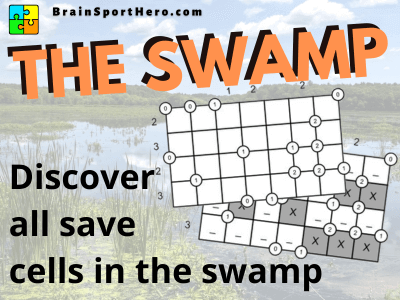Swamp Puzzles
Train your logical thinking with the Swamp Puzzles: You want to cross the swamp. Unfortunately your map is incomplete. The dangerous cells are not marked. But there are tips that can help you logically explore all the fields on theRead More »Swamp Puzzles











